
- 1. Introduction to Breathwork in Dance
- 2. How Breathwork Improves Dance Performance
- 3. Techniques for Integrating Breathwork into Dance Practice
- 4. Real-life Examples of Breathwork in Dance
- 5. Common Mistakes to Avoid in Dance Breathwork
- 6. Conclusion: Mastering Breathwork for Better Dance Execution
1. Introduction to Breathwork in Dance
Breathwork is an often-overlooked yet vital aspect of dance performance. It refers to the intentional practice of controlling and directing your breath to enhance physical and mental performance. In dance, breathwork can be a game-changer, allowing dancers to improve their flow, energy, and endurance. Proper breathing also helps dancers manage stress and anxiety, ensuring they stay focused and calm during their performance. Whether you're a beginner or an experienced dancer, incorporating breathwork into your routine can significantly impact your overall execution.

Steps of Faith Dance Studio / steps of faith celina
695 N Preston Rd Ste 180, Celina, TX 75009, USA
2. How Breathwork Improves Dance Performance
Breathing is the foundation of movement in dance, and it plays a critical role in several key areas:
- Enhancing Endurance: Proper breathing allows dancers to maintain energy levels and stamina throughout their routines. Deep breathing helps the body receive more oxygen, reducing fatigue and improving performance over time.
- Improving Focus: Breathwork can help dancers stay mentally present. By focusing on breath, dancers can block out distractions, improving concentration during rehearsals and live performances.
- Increasing Flexibility: Controlled breathing helps increase the range of motion by relaxing the muscles, allowing dancers to stretch deeper and perform more fluid movements.
- Supporting Emotional Expression: Breathwork can also aid in emotional expression through dance. Breath patterns can match the rhythm of the dance, enhancing the emotional connection to the performance.
3. Techniques for Integrating Breathwork into Dance Practice
There are several ways to incorporate breathwork into your dance practice. Here are some techniques to try:
- Conscious Breathing: Focus on deep, slow breaths through your nose, allowing your diaphragm to expand. This will help improve lung capacity and ensure that you are breathing properly during intense routines.
- Breathing with Movement: Synchronize your breath with your movements. For example, exhale as you contract your body (e.g., during a twist or jump) and inhale as you extend (e.g., during a lift or reach).
- Breath Holds: Practice holding your breath for short periods to increase control over your respiratory system and help manage your breath during more demanding parts of a routine.
- Relaxed Breathing for Recovery: After a particularly intense performance or practice, take deep, relaxed breaths to help your body recover. This will reduce muscle tension and promote relaxation.
4. Real-life Examples of Breathwork in Dance
Breathwork is not a new concept in the dance world. Many famous dancers and choreographers have emphasized its importance in performance. For example, renowned ballerina Isadora Duncan once said, "Dance is the movement of the breath." She emphasized that breathing patterns could shape the way dancers express themselves, as the rhythm of breath influences their movements.
In contemporary dance, choreographers often integrate breath as an emotional tool, using it to add intensity or subtlety to a performance. Dancers in ballet, jazz, hip-hop, and modern dance have all seen the benefits of controlled breathing, from smoother execution of difficult moves to an enhanced connection with the audience.

The Dancel Y in Ellicott City / y dancel
Ellicott CityHoward CountyMaryland
4331 Montgomery Rd, Ellicott City, MD 21043, USA
5. Common Mistakes to Avoid in Dance Breathwork
While breathwork is crucial for dance, many dancers make common mistakes that hinder its effectiveness:
- Shallow Breathing: Many dancers breathe too shallowly, only using their upper chest, which limits oxygen intake and reduces energy levels. Focus on diaphragmatic breathing to fully expand your lungs.
- Holding Breath During Movement: Holding your breath during physical exertion is a common mistake. This leads to muscle tension and fatigue. Always maintain a steady flow of breath during movements.
- Forgetting to Relax: While breathwork helps with focus, it’s equally important to relax your body. Tension in the muscles can limit your movement. Focus on releasing tension with each exhale.
6. Conclusion: Mastering Breathwork for Better Dance Execution
Breathwork is not just a tool for relaxation; it's a powerful component of a dancer's training regimen. By learning how to use breath effectively, dancers can improve their performance, increase endurance, and create more expressive movements. Whether you're practicing in the studio or performing on stage, breathwork can elevate your dancing to new heights. To get started with integrating breathwork into your routine, explore further resources or consult experts in the field. For more tips and training opportunities, visit Creative Edge Dance Studio to find the best products and services for dancers.


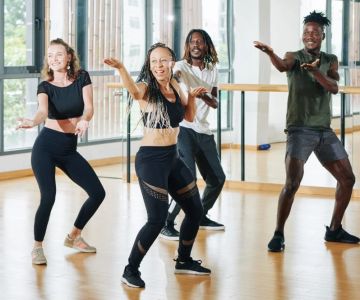


 Arathi School of Dance0.0 (0 reviews)
Arathi School of Dance0.0 (0 reviews) Inverted Dance Pole & Aerial Studio5.0 (22 reviews)
Inverted Dance Pole & Aerial Studio5.0 (22 reviews) Rulz Fitness5.0 (12 reviews)
Rulz Fitness5.0 (12 reviews) Academy of Dance4.0 (4 reviews)
Academy of Dance4.0 (4 reviews) Fuquay-Varina Arts Center Dance Program5.0 (1 reviews)
Fuquay-Varina Arts Center Dance Program5.0 (1 reviews) Allegro Dance5.0 (9 reviews)
Allegro Dance5.0 (9 reviews) How to Know if a Dance Studio and Instructor Are Right for You
How to Know if a Dance Studio and Instructor Are Right for You What is Dance Improv? How to Trust Your Instincts
What is Dance Improv? How to Trust Your Instincts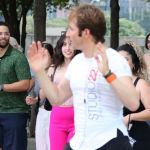 The Best Apps for Finding Local Dance Events and Socials
The Best Apps for Finding Local Dance Events and Socials How to Create a Dance Routine for a Wedding Party
How to Create a Dance Routine for a Wedding Party What is Hip-Hop Theater? Blending Styles for the Stage
What is Hip-Hop Theater? Blending Styles for the Stage How to Use Dance as a Form of Stress Relief and Meditation
How to Use Dance as a Form of Stress Relief and Meditation